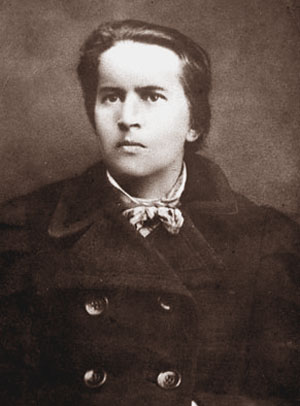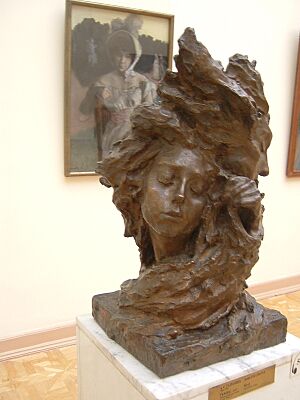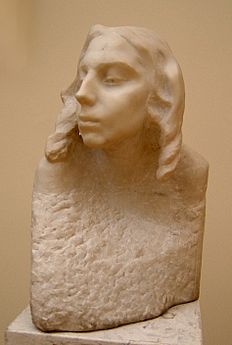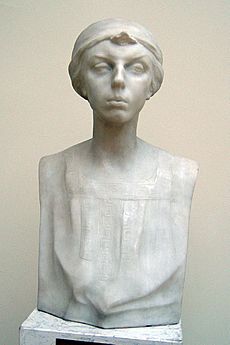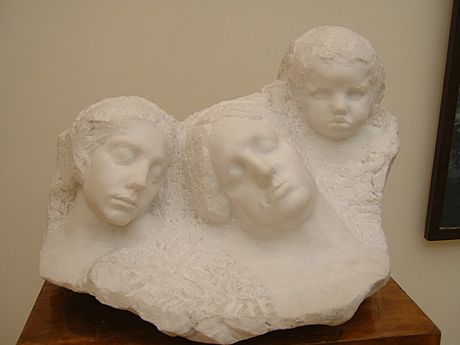Anna Golubkina facts for kids
Anna Semyonovna Golubkina (born January 28, 1864 – died September 7, 1927) was a famous Russian sculptor. She created art in the impressionist style. She was the first Russian sculptor to win a prize at the important Paris Salon art show. This makes her known as the first important female Russian sculptor. Her artwork was also shown at the famous Alexander III Museum. Even a crater on the planet Venus is named after her!
Biography
Anna Golubkina was born in Zaraysk, Russia, in 1864. Her family were farmers and belonged to a group called Old Believers. Her father passed away when she was only two. Her grandfather, Policarp Sidorovich Golubkin, raised her. He was a successful vegetable farmer.
Anna did not go to school until she was 25 years old. However, all the children in her family could read and write. Her older sister, Alexandra, later became a nurse. Anna's talents in painting and sculpture were noticed by a local art teacher. He told her she should go to Moscow to study art.
In 1889, she tried to join an architecture school called Otto Gunst's Classes for Elegant Arts. She failed some exams because she had no formal education. But a sculptor named Sergey Volnukhin was an examiner. He saw her work and said no other sculptor could make anything like her 'Praying old woman'. He convinced the school to let her in and even to let her study for free.
The next year, the school closed. Anna then went to the Moscow School of Painting, Sculpture and Architecture. She studied there from 1890 to 1894. Her teacher was Professor Sergey Ivanov. Another famous sculptor, Sergey Konenkov, was one of her classmates.
From 1894 to 1895, she studied at the Imperial Academy of Arts in Saint Petersburg. She worked in the studio of the famous sculptor Vladimir Aleksandrovich Beklemishev.
In 1895, Anna went to Paris, France. She studied at the Académie Colarossi from 1895 to 1897. Many Russian artists went abroad to study. But Anna was one of the first to go to Paris with very little money. She struggled but still created important sculptures, like 'The Iron One'.
In 1897, she came back to Russia briefly. Then she became an assistant to the famous sculptor Auguste Rodin from 1897 to 1900. Rodin asked her to work on the hands and legs of his sculptures. During this time, she also made 'The Old Age', 'The Fire', and 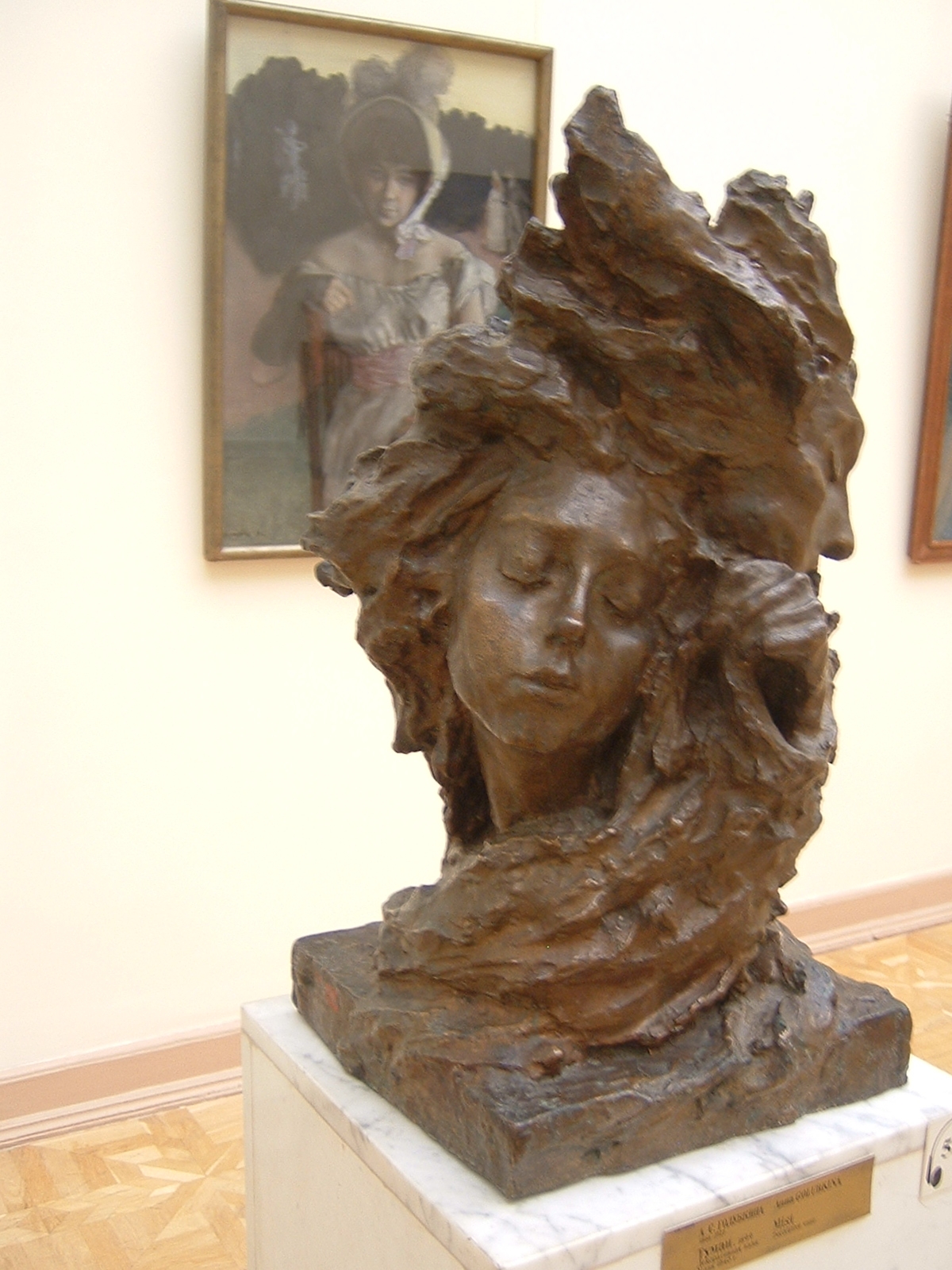
In 1901, she returned to Moscow. Her sculpture The Wave was placed on the front of the Moscow Art Theatre. It became a symbol of Russian Modernism. She took part in the Russian Revolution of 1905. She was arrested for sharing leaflets and was sentenced to prison. However, she was freed because of her poor health. She also created many sculpted portraits. These included portraits of famous people like Andrei Bely, Alexei Remizov, Leo Tolstoy, and Karl Marx.
Anna Golubkina was excited about the 1917 October Revolution at first. But she later refused to work with the new Soviet Government. However, she eventually agreed to teach at VKhUTEMAS, an art school. One of her students there was the Tatar sculptor Baqi Urmançe.
Anna Golubkina died in 1927. She was working on a sculpture of Alexander Blok at the time. She had surgery and was told not to lift heavy things. But working on the large wooden sculpture needed a lot of physical effort. Golubkina felt very ill and went to her sister, Alexandra, in Zaraysk. She hoped Alexandra could help her. She passed away a few days after arriving there.
Golubkina's art studio in Moscow became a museum in 1932. It was the first museum of its kind in Russia.
Selected works
See also
 In Spanish: Anna Golubkina para niños
In Spanish: Anna Golubkina para niños


